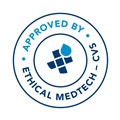
Ricardo L Marengo
University Institute of CEMIC
Argentina
Title: Evaluation of hearing gain on aging
Biography
Biography: Ricardo L Marengo
Abstract
Introduction: The hybrid cochlear implant was designed for patients suffering from severe-to-profound hearing loss in higher frequencies with good Residual hearing in lower frequencies as they do not benefit with the use of a hearing aid , especially in situations of background noise, the combination of both technologies allows stimulation of the entire frequency range. Audiological candidates are frequently found in population over 65 years old and are not usually considered.
Objectives: To evaluate the hearing gain and use of electroacustic stimulation in two patients over 65 years.
Materials and Methods: Two patients who received cochlear implant Hybrid L at ages of 76 and 71 years. Evaluation of hearing gain made without equipment, with hearing aids and electro acustic stimulation. Performance in situations of silence and background noise were compared. Results were also compared with population in the same hearing conditions and stimulation but with less chronological age.
Results: The pre -surgical hearing level and pos-surgical pre activation were evaluated. Later, pos activation at three and six months and finally annually for up to five years. None of the patients had intra nor pos surgical neurosensorial hearing loss. Auditory performance was evaluated with and without background noise in different situations, showing increased discrimination from 0 and 30 % up to 70 and 90 % in noise. The hearing gain was similar to that of younger cases. The use of bimodal stimulation was permanent in both cases, referring great recovery comfort and quality of auditory life.
Conclusion: No differences were observed in auditory gain neither in time of use with younger population with the same technology. Both patients use bimodal stimulation permanently.

